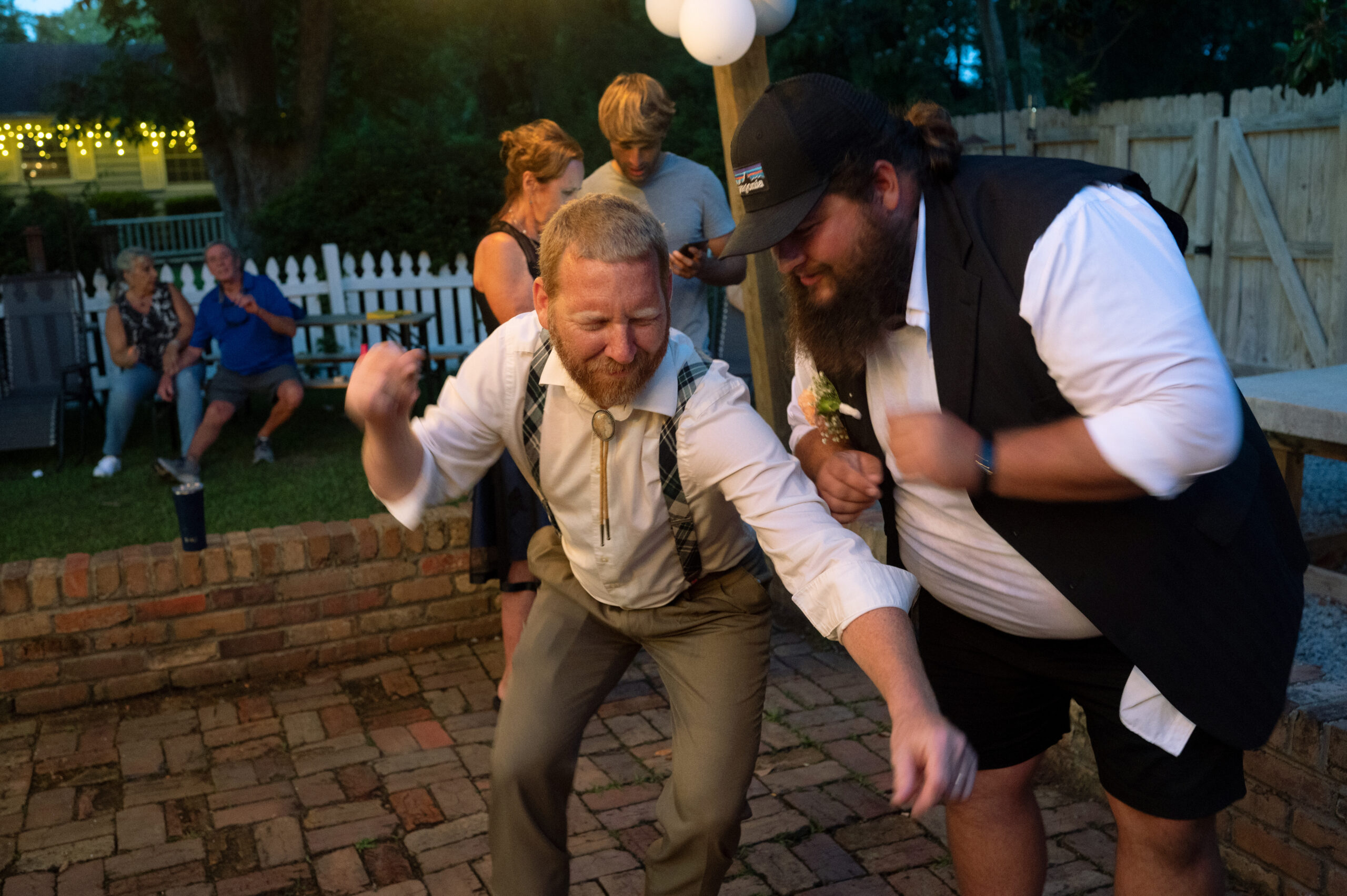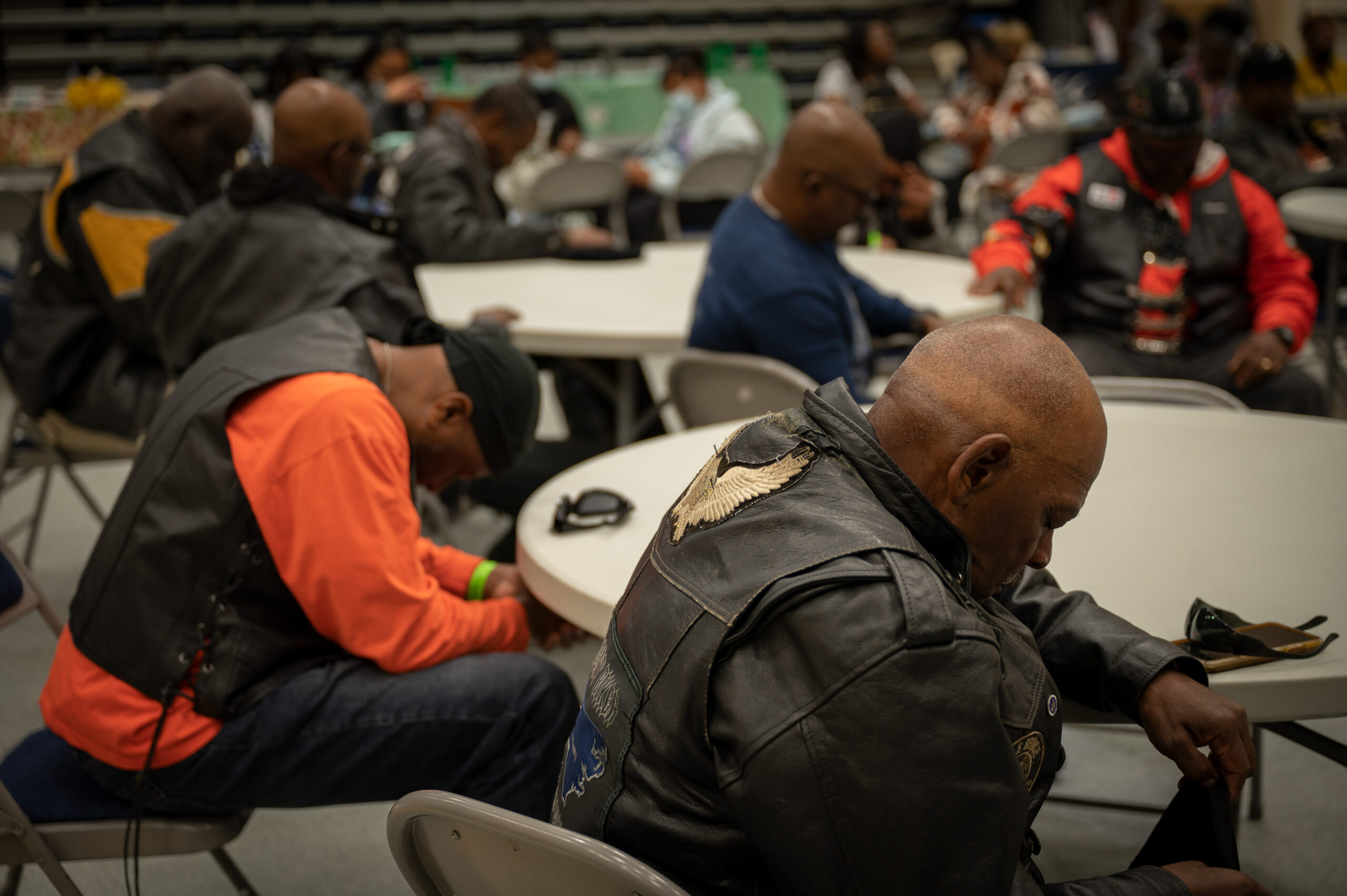How Down in the County uses photojournalism to build community in rural North Carolina
Andrea Bruce, Down in the County,
People dance at Thrift Store Prom at The New Village Brewery in Oriental, North Carolina. (Andrea Bruce/Down in the County)
Here’s an idea to steal and adapt: Good photography can be a common ground, going beyond politics and culture.This is a series on Better News to a) showcase innovative/experimental ideas that emerge from the Knight-Lenfest Newsroom Initiative and b) share replicable tactics that benefit the news industry as a whole.
This “win” comes from Andrea Bruce, founder of Down in the County, which participated in the UNC Table Stakes program in 2023. Find 15 photojournalism tips for reporters from Down in the County’s founder here.
Question: What problem were you trying to solve, and why was that problem strategically important to your organization?
Answer: My community is a small and isolated part of eastern North Carolina. We have two stop-lights and seven dollar stores. The county seat, Bayboro, has a 40% poverty rate. We have two weeklies in the county. One is mostly conspiracy-based, right-wing politics. The other primarily publishes advertising and press releases. The people in our county were becoming more and more divisive and uninformed.
Q: How did you go about solving the problem?
A: After decades working as a photographer and reporter for large publications around the world, I started a small publication in eastern North Carolina on a whim in 2021— to give people in the county an alternative to a weekly here that often reports conspiracy theories and, to many, is considered racist.
My publication, Down in the County, is a visual-first, online publication about Pamlico County, North Carolina, where I grew up, to fill the void of ethical news.
Today, no more than 12,000 people live in this rural county in eastern North Carolina. The farmlands and backyard creeks that snake through the county from the Pamlico Sound are as beautiful and unknown as the people who live and work here. Down in the County covers school board meetings, proms, loggers, shrimp trawlers, the county jail and all of the things that make us who we are.
Five years after its start, more than half of the adult population of the county subscribes. I believe good photography is the reason for our success.

The Fall Motorcycle Memory Ride honors Jamal Jones, who died in January 2021 at the age of 37 of complications from sickle cell disease. (Andrea Bruce/Down in the County)
Q: What worked?
A: People in remote, rural places like mine have told me that they are tired of seeing and reading about people elsewhere. Photography — good photography — puts local people on par with people from New York City and Raleigh. People here are no less important than people elsewhere. Seeing themselves in their news puts them on this timeline, this archive. I love doing New York Times-style profiles on folks in the county, such as this recent one on a retiring county manager. The reactions have been strong. They want to be recorded, visually, beyond stereotypes and cliches — with respect.
Good photography is a common ground, going beyond politics and culture. In Pamlico, photography reaches people on both sides of the aisle. Everyday people, farmers, retirees, teachers and students send in their own photos to publish in our once-a-month “Pamlico Pix.” It has the power to remind us that we are neighbors. It can increase empathy.
We also run the “Snapshots” program, which teaches young people photojournalism with our community partner, Youth Navigating Toward Opportunity,) which primarily serves the local Black community. The teens in the program have written and photographed and published stories in Down in the County, such as coverage of a local festival and a profile on a local basketball coach. Teaching young people the importance of journalism is possibly the aspect I am most excited about.

A member of the Dazzling Dancers performs for ‘Why Act Your Age?’ at the Old Theater on Broad Street. This photo was taken by one of the teens participating in the Snapshots program. (Kendra Smith/Down in the County)
This connection to local journalism and visuals is also part of CatchLight, a foundation that has the same mission and has provided valuable support to me and Down in the County.
Strong visuals also draw readers to read the words. Good photojournalism that focuses on ethics, light, composition and emotion is a beacon for each story.
In a world where reading is going out of style, this works.
Q: What didn’t work?
A: I am stretched thin. I haven’t been able to do all of it — fundraising, photography, reporting and Snapshots — and still make a living. I had to hire a reporter in residence and teach full time so that I could focus on the fundraising and publishing side of things.
This means I’m not photographing my community, which was my dream. Instead, I’m passing that opportunity to young people like our current reporter/photographer Eleazar Yisrael who is incredibly talented.
Q: What happened that you didn’t expect?
A: I didn’t expect that people in my community want local news as much as they do. I feel embarrassed to admit this. Even though I went to high school here, or, maybe because I went to high school here, I didn’t think people in this rural area would want to read the stories I was writing/photographing. I think this is a misconception many people from traditional, big publications have about the rural U.S. Our dedicated following, which seems to reach people on both sides of the political aisle, was a surprise.

Ariana Cox, a senior, prepares to have her photo taken at Union Point Park in New Bern, the nearest city of any size to Pamlico County. It’s a tradition for Pamlico County students to have their pictures taken here before prom.
Q: What advice would you give to others who try to do this?
A: Think of visuals as just as important, if not more important, as words when you are putting together your team, new hires and day-to-day reporting. In my experience, it is easier to train photographers to write than it is for writers to make photos. They are two skills that are difficult to balance. But make sure photography is high on the hierarchy and never an afterthought.
Learn more: 15 photojournalism tips for reporters, from the founder of Down in the County
Q: What’s next for this work?
A: We are transitioning from a newsletter to an official website and growing advertisers to become more professional and sustainable. This is our next phase, and these steps seem to go hand-in-hand. In a small, very traditional community, this means visiting each potential client and talking to them about the possibilities. I’m hoping we can find a new, visual- and story- focused approach to advertising.